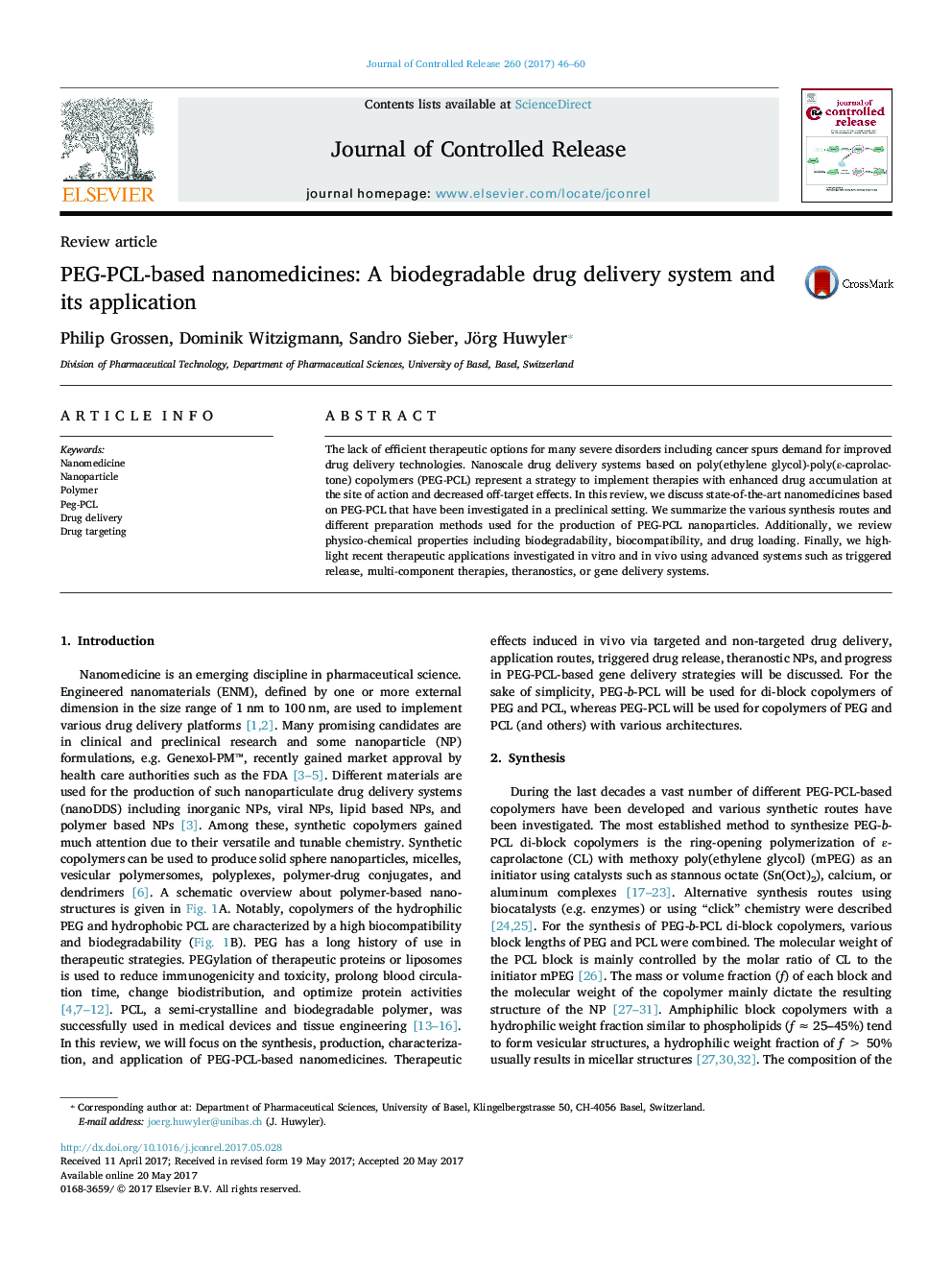| Article ID | Journal | Published Year | Pages | File Type |
|---|---|---|---|---|
| 5433492 | Journal of Controlled Release | 2017 | 15 Pages |
The lack of efficient therapeutic options for many severe disorders including cancer spurs demand for improved drug delivery technologies. Nanoscale drug delivery systems based on poly(ethylene glycol)-poly(ε-caprolactone) copolymers (PEG-PCL) represent a strategy to implement therapies with enhanced drug accumulation at the site of action and decreased off-target effects. In this review, we discuss state-of-the-art nanomedicines based on PEG-PCL that have been investigated in a preclinical setting. We summarize the various synthesis routes and different preparation methods used for the production of PEG-PCL nanoparticles. Additionally, we review physico-chemical properties including biodegradability, biocompatibility, and drug loading. Finally, we highlight recent therapeutic applications investigated in vitro and in vivo using advanced systems such as triggered release, multi-component therapies, theranostics, or gene delivery systems.
Graphical abstractFigure optionsDownload full-size imageDownload high-quality image (89 K)Download as PowerPoint slide
